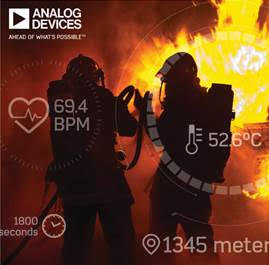The proof of concept (POC) IoT solution, according to the vendors, is designed to improve the safety and effectiveness of first responders when involved in an emergency situation, especially those in harsh environments.
According to the National Fire Protection Association, more than 60,000 fire fighter injuries in North America alone are reported annually, of which 25% are as a result of overexertion or strain.
This IoT solution that monitors the first responders’ health could help prevent this statistic above by allowing the ‘virtual control room’ to monitor a variety of real-time vital signs.
The POC IoT solution tracks the location and vital signs of first responders at all times in or outside of buildings, and takes the form of a smart, wearable sensor-equipped vest, which is worn by personnel.
The devices measures a range of health metrics including breathing rate, breathing volume, and heart rate.
>See also: How the Internet of Things is changing the business landscape
A connected boot tracks location and movement.
Dell EMC and Analog Devices suggest that by identifying potential worker health issues immediately and tracking lone workers via these metrics, emergency teams can be healthier, safer, and more efficient.
Where does the data go?
All the relevant vest and boot data collected will transfer to ‘an edge gateway device’ and relayed via a mobile network to a private, secure cloud.
The real-time results from multiple personnel are then displayed on a portal via a dashboard for access by control teams who may be at the emergency site or in a central control location, suggests the 2 vendors.
Current and historical data would then be analysed to monitor worker health and enable a fast response to ensure their safety.
>See also: IoT and manufacturing: more than streamlining the factory process
“This POC IoT solution brings together multiple technologies in a unique way and showcases the need for precise and robust measurement in mission-critical applications,” said Jason Lynch, director, IoT Strategy, Analog Devices.
“Software algorithms correlate the various data streams using the INFINITE [an industrial internet consortium (IIC) approved testbed] to determine the health and location of workers in real time, and help to ensure critical decisions regarding their safety are made immediately and reliably.”
Future possibilities
The POC IoT solution platform will allow for future integration of a broader range of sensing technologies to adapt to different mission profiles, including incorporation of precision inertial measurement units for dead-reckoning navigation in GPS-denied environments, according to the vendors.
Basically this means the technology can adapt to a range of environments that pose different challenges, whether it is an area with bad signal or harsh terrain.
This is perhaps a more innovative example of the IoT can benefit diverse industries, such as first response.










